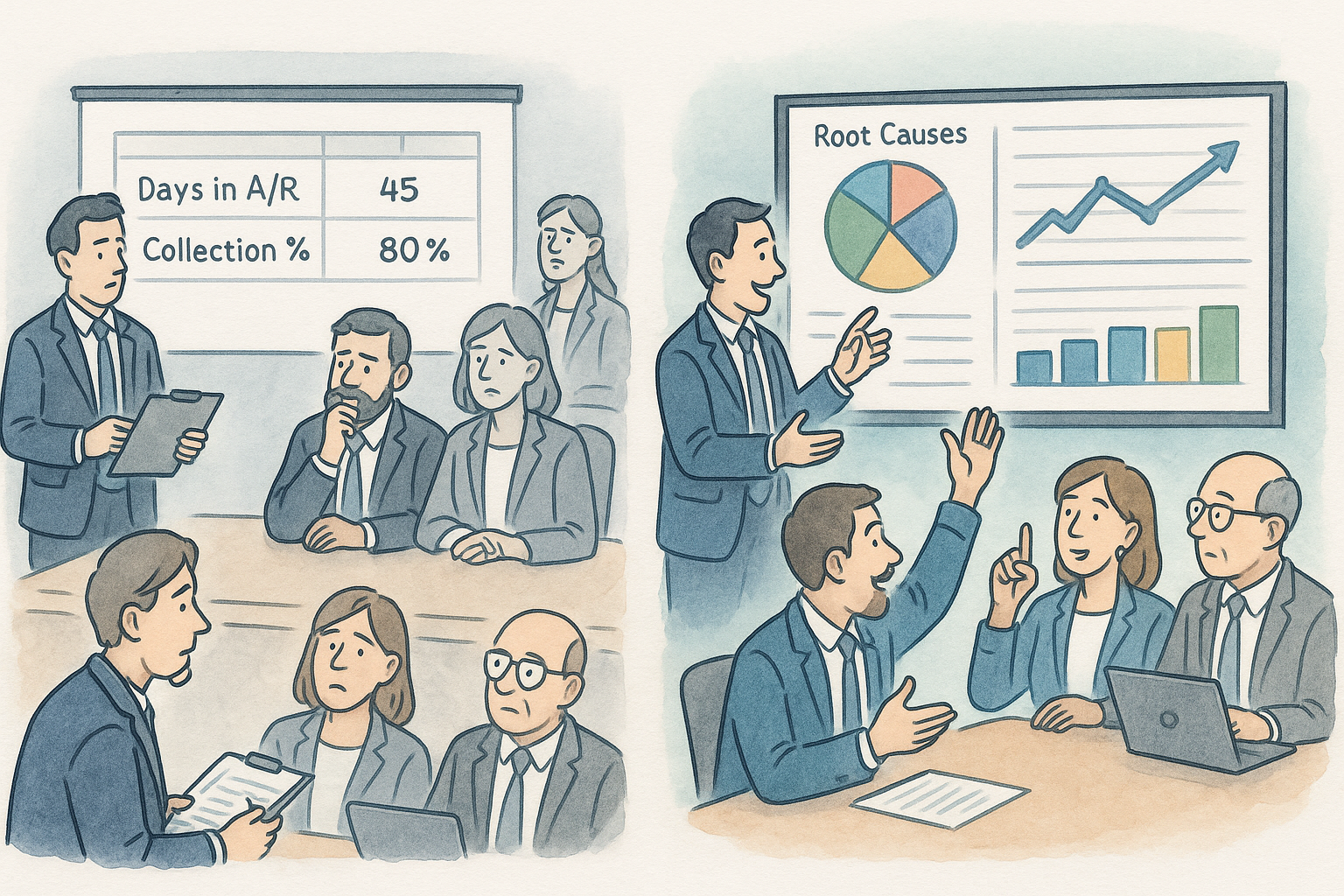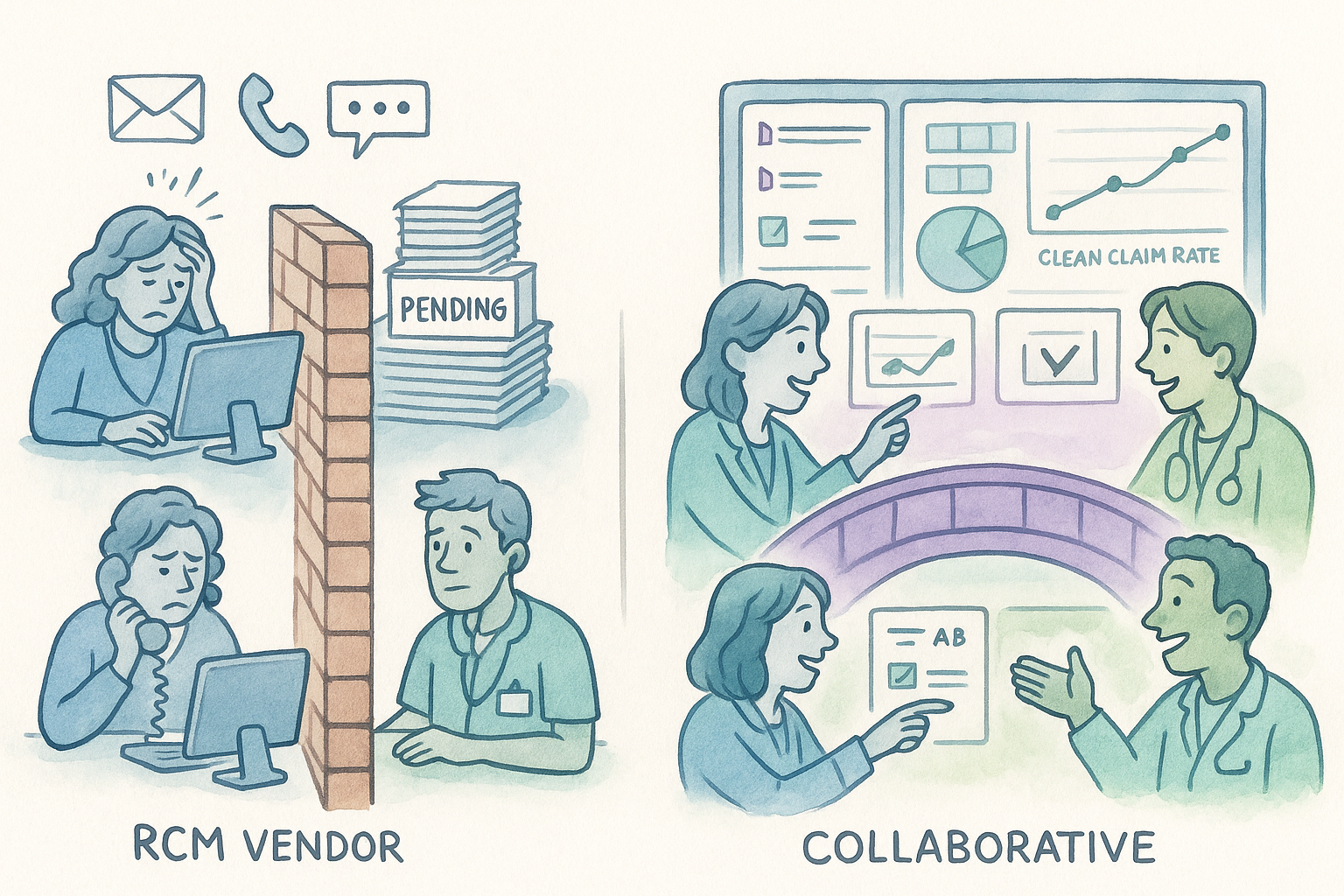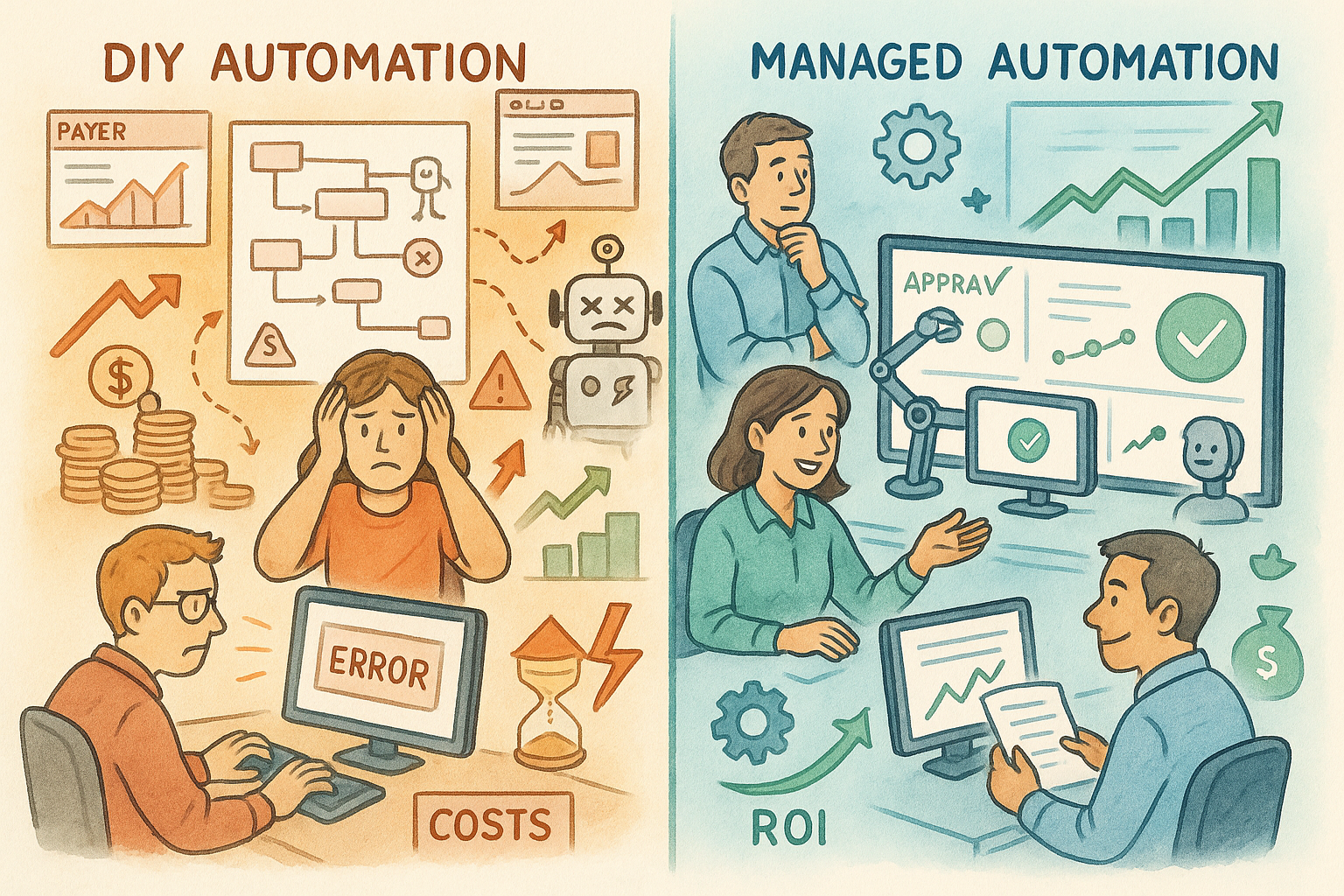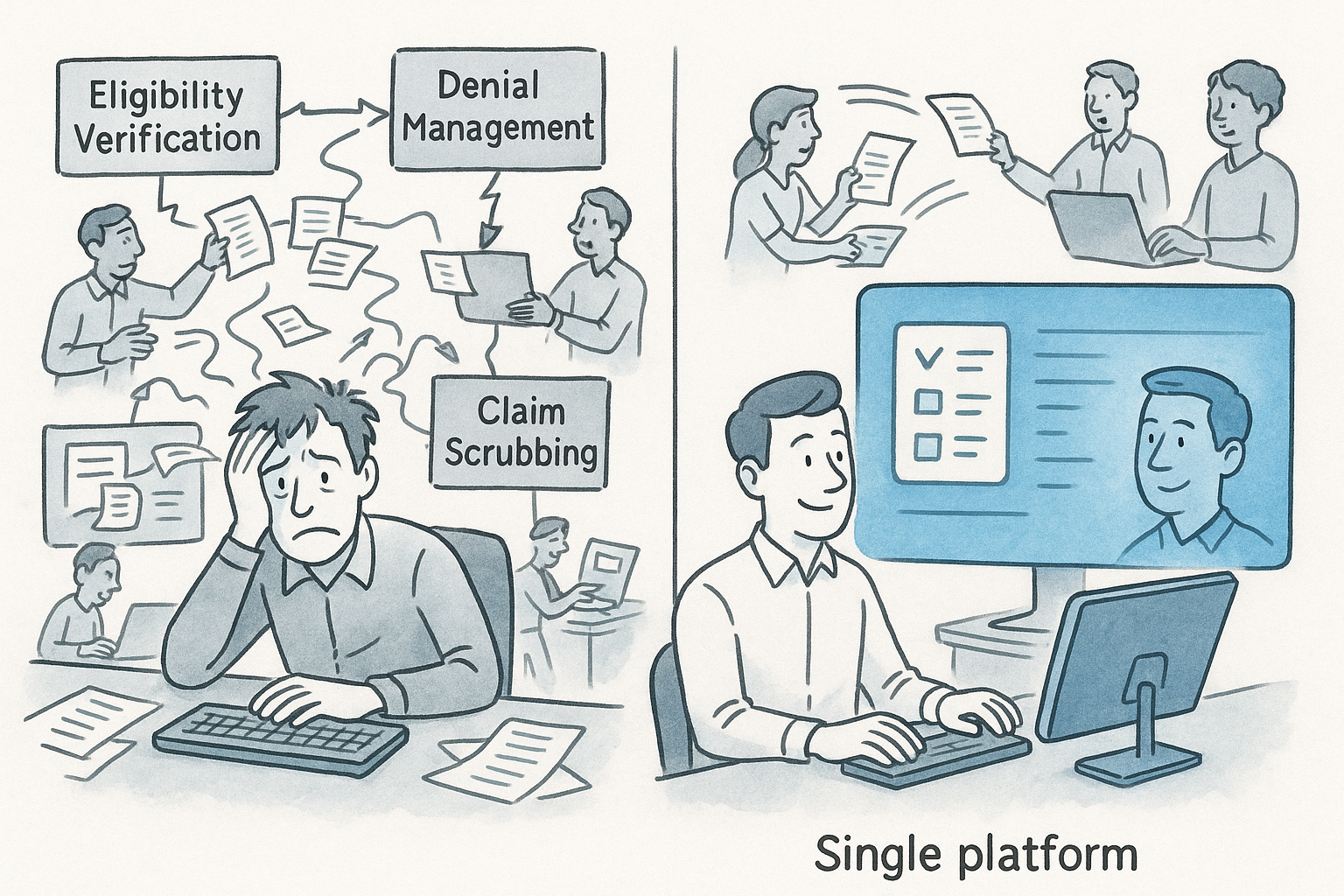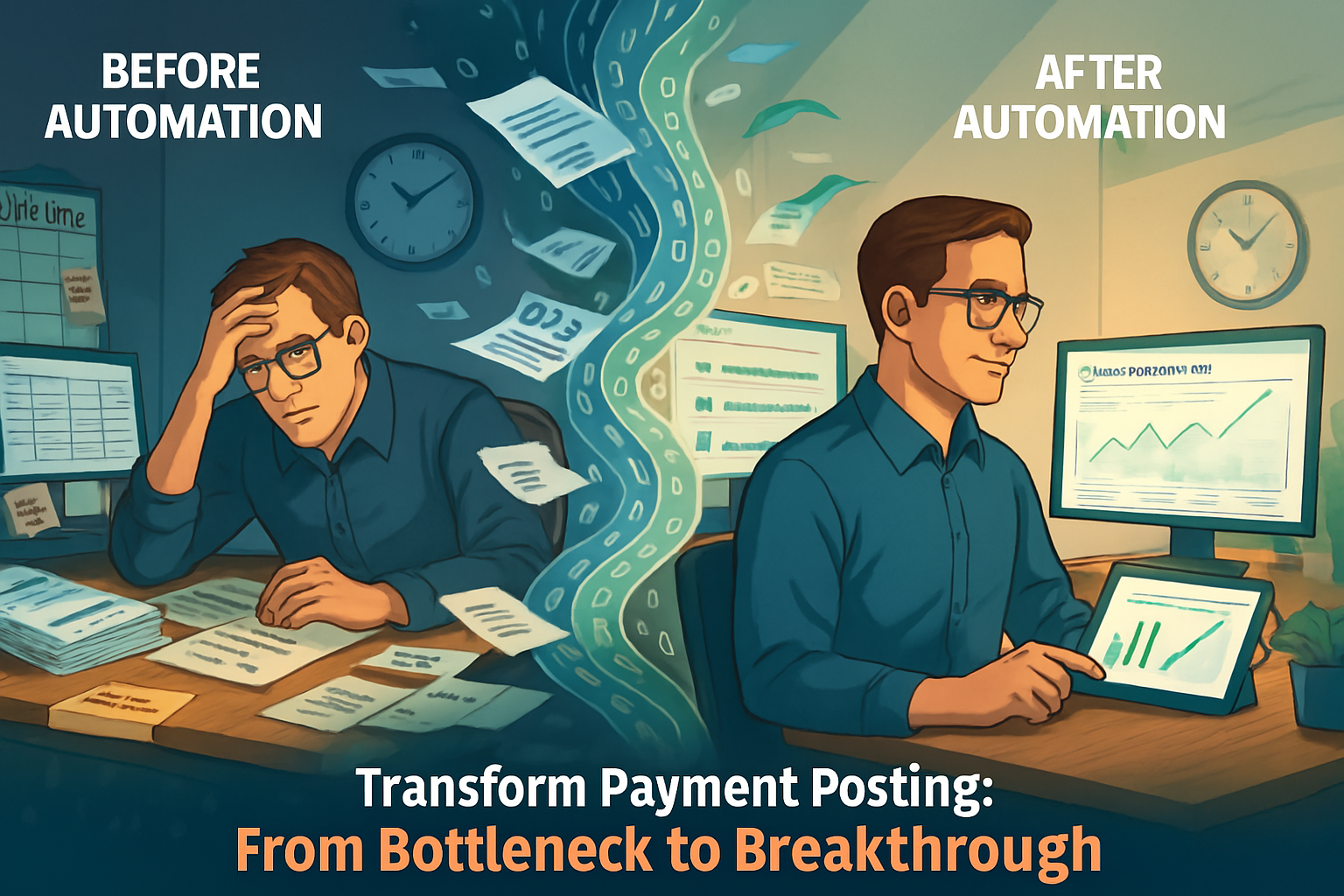In today’s competitive revenue cycle management landscape, service quality and pricing are no longer the only factors that matter to healthcare providers. Increasingly, providers expect their RCM vendors to deliver something more valuable: insights.
The days of sending monthly Excel reports with basic metrics like days in A/R, clean claim rates, and collection percentages are quickly fading. Healthcare organizations now expect their revenue cycle partners to help them understand the “why” behind performance trends and provide actionable recommendations for improvement.
This shift presents both a challenge and an opportunity for RCM vendors. Those who continue to rely on basic reporting will struggle to maintain client relationships, while those who elevate their analytics capabilities can transform their role from service provider to strategic advisor.
The Evolution of Healthcare Provider Expectations
Healthcare financial leaders have grown increasingly sophisticated in their approach to revenue cycle management. Several factors have accelerated this evolution:
Financial Pressure
With margins tightening across healthcare, providers are scrutinizing every aspect of their revenue cycle for improvement opportunities. Generic performance reports don’t provide the granular insights needed to identify specific action areas.
EHR Reporting Limitations
While EHRs have improved their reporting capabilities, most still offer limited analytics functionality. Providers expect their RCM partners to fill this gap with more sophisticated analysis.
Value-Based Care Transition
As providers navigate the shift toward value-based payment models, they need more complex financial analytics that connect clinical and financial performance.
Industry Benchmarking
Healthcare leaders increasingly want to understand how their performance compares to similar organizations—information that requires contextual analysis, not just raw metrics.
As one practice administrator told us: “I don’t need a vendor to tell me my days in A/R. I need them to tell me why certain claims are taking longer and what specific actions will improve our cash flow.”
The Limitations of Traditional RCM Reporting
Before exploring more advanced approaches, it’s worth examining why traditional RCM reporting falls short:
Static, Not Interactive
Most traditional reports provide a fixed view of data at a specific point in time. This limits exploration and prevents clients from asking follow-up questions as insights emerge.
Backward-Looking, Not Predictive
Traditional reporting focuses almost exclusively on what has already happened, offering limited insight into future performance or emerging trends.
Metrics Without Context
Basic reports often present metrics without the contextual information needed to understand their significance or take appropriate action.
Divorced From Workflow
Reports typically exist separately from the workflows they should inform, creating a disconnect between analysis and action.
Presentation Challenges
Complex spreadsheets with multiple tabs and hundreds of rows of data make it difficult for busy healthcare leaders to quickly identify the most important insights.
These limitations result in a common scenario: RCM vendors create detailed reports that clients rarely read thoroughly, limiting the perceived value of both the reporting and the underlying services.
Transforming Client Meetings Through Interactive Analytics
The most immediate impact of advanced analytics often comes in client meetings. With the right tools, what was once a defensive review of past performance can become a collaborative problem-solving session.
From Static to Dynamic
Instead of walking through predetermined slides, interactive analytics allow you to respond to client questions in real-time:
- “How did our denial rate for Procedure X compare to last quarter?”
- “What impact did the new prior authorization requirement have on our Medicare Advantage claims?”
- “Which providers have the highest rate of documentation issues?”
With on-demand analytics, these questions can be answered immediately, maintaining the flow of the conversation and demonstrating your team’s expertise.
Visualization Power
Well-designed visualizations make patterns and outliers immediately apparent. Rather than asking clients to interpret rows of numbers, you can show them:
- Trend lines that reveal gradual changes over time
- Heat maps that highlight problem areas
- Comparative charts that benchmark performance against relevant peers
One RCM leader shared: “When we switched from spreadsheet reports to visual dashboards, our clients started asking different questions. They moved from ‘What happened?’ to ‘Why did this happen, and what should we do about it?'”
From Defensive to Collaborative
Perhaps the most significant shift comes in the nature of client interactions. With better analytics, the conversation changes:
Traditional Approach:
- Client: “Why is our days in A/R so high?”
- Vendor: “Well, there were some staffing issues last month, and a few large claims are outstanding…”
Analytics-Driven Approach:
- Vendor: “Our analysis shows three factors driving your increased days in A/R: a spike in radiology claim denials from Aetna, delayed responses on medical necessity appeals, and an increase in claims pending provider documentation. Let’s look at each one and develop a targeted strategy.”
This proactive approach positions you as a problem-solver rather than a service provider requiring supervision.
Root Cause Analysis: Moving Beyond Symptoms
Healthcare providers are increasingly interested in addressing the underlying causes of revenue issues rather than just treating symptoms. Advanced analytics enable this deeper understanding in several ways:
Cross-Process Insights
Revenue cycle operations don’t exist in isolation. Performance in one area affects results in others, creating complex cause-and-effect relationships. Advanced analytics can reveal these connections:
- How front-end insurance verification errors correlate with specific denial types
- The relationship between provider documentation patterns and claim rejection rates
- How patient collection strategy impacts overall reimbursement by payer
Pattern Recognition
Modern analytics tools can identify patterns that might go unnoticed in traditional reports:
- Recurring timing patterns in payer processing that affect cash flow
- Correlation between specific diagnoses and claim delays
- Provider-specific documentation issues that impact coding optimization
Payer Behavior Analysis
One of the most valuable insights comes from analyzing payer behavior over time:
- Identifying changing denial patterns that might indicate new automated claim edits
- Tracking payment variance from contracted rates
- Monitoring prior authorization approval percentages by service type
A medical group CFO described the value this way: “For years, we focused on our denial rate, but what we really needed was to understand which specific payer requirements were changing and causing those denials. That’s what finally helped us improve.”
Visualizing Improvement Over Time: Telling Your Impact Story
Healthcare providers want reassurance that their RCM partner is driving continuous improvement. Advanced analytics provide powerful ways to demonstrate your impact:
Intervention Tracking
When you implement a process change or focused initiative, analytics can track the before-and-after impact:
- Showing denial reduction following a focused appeal strategy
- Tracking cash acceleration after implementing a new workflow
- Measuring documentation improvement following provider education
Counterfactual Analysis
Sometimes the most compelling value story involves what didn’t happen:
- “Without our intervention on these accounts, you would have lost approximately $X in revenue”
- “Our prior authorization process prevented an estimated X% of potential claim denials”
- “By identifying these underpayments, we prevented $X from being left on the table”
Comparative Benchmarking
Contextualizing performance within relevant peer groups helps clients understand their relative position:
- Similar-sized practices in the same specialty
- Providers facing the same payer mix
- Organizations using the same EHR system
This contextual information helps set realistic expectations and highlights areas where performance exceeds industry standards.
From Reporting to Recommendations: The Advisory Opportunity
The ultimate evolution in client analytics moves beyond explaining what happened to recommending what should happen next. This advisory approach can include:
Performance Improvement Roadmaps
Based on data analysis, create prioritized recommendations for addressing key revenue opportunities:
- Short-term operational adjustments to address immediate issues
- Medium-term process changes to improve efficiency
- Long-term strategic initiatives to optimize revenue performance
Payer Strategy Insights
Analytics can inform payer contract negotiations and relationship management:
- Identifying payers with disproportionate administrative burden
- Quantifying the impact of contract terms on actual reimbursement
- Comparing promised vs. actual payment timing
Resource Allocation Guidance
Data can help clients make better decisions about how to allocate their limited resources:
- Which denial types warrant additional staff time for appeals
- Where additional training would have the greatest financial impact
- Which services have the highest administrative cost relative to reimbursement
As one RCM leader noted: “Our best client relationships are the ones where we’ve moved beyond reporting performance to actually helping shape their revenue strategy.”
Case Study: Analytics-Driven Client Retention
A mid-sized RCM vendor serving primary care practices was facing increasing competition and client turnover. Exit interviews revealed a common theme: clients felt they weren’t getting enough strategic value from the relationship.
The vendor implemented a new analytics platform with these key features:
- Interactive dashboards that clients could access anytime
- Root cause analysis tools that linked front-end processes to back-end results
- Provider-specific performance metrics with actionable improvement recommendations
- Payer behavior tracking to identify changing patterns
- Benchmark comparisons to similar practices
The results were transformative:
- Client retention increased from 81% to 94% within 18 months
- Contract expansions (adding services) increased by 40%
- The vendor’s NPS score improved from 32 to 61
- Average client contract value increased by 23% as they added advisory services
The vendor’s director of client success explained: “We’re having completely different conversations now. Instead of defending our performance, we’re collaborating on strategy. Our clients see us as partners, not vendors.”
Implementation Roadmap: Elevating Your Analytics Approach
Moving from basic reporting to strategic analytics doesn’t have to happen overnight. Consider this phased approach:
Phase 1: Interactive Foundations
- Implement dashboards that allow real-time data exploration
- Train client-facing staff on data interpretation and visualization
- Create standard views that address common client questions
Phase 2: Root Cause Capabilities
- Develop tools to analyze connections between different revenue cycle stages
- Build provider-specific performance analytics
- Implement payer behavior tracking
Phase 3: Predictive and Prescriptive Elements
- Add predictive modeling for key performance indicators
- Develop recommendation engines based on pattern recognition
- Implement scenario analysis tools for strategic planning
Phase 4: Client Self-Service
- Provide secure client access to interactive dashboards
- Enable custom alert creation for key metrics
- Implement collaborative annotation and action planning
Throughout this progression, maintain focus on delivering actionable insights rather than just interesting data. As one successful RCM leader advised: “Every analysis should end with a ‘so what’ and a ‘now what’ — what it means and what actions it suggests.”
Conclusion: Analytics as Competitive Advantage
In a market where service commoditization and price pressure are constant threats, advanced analytics offer RCM vendors a path to differentiation and higher-value client relationships.
By moving beyond basic reporting to deliver interactive, insight-driven analytics, you can:
- Transform client meetings from performance reviews to strategic planning sessions
- Demonstrate the tangible value your services deliver
- Position your organization as an advisor rather than a vendor
- Create barriers to competition that go beyond price comparisons
- Justify premium pricing through demonstrated strategic value
As healthcare providers face unprecedented financial challenges, they need revenue cycle partners who can help them understand not just what’s happening, but why it’s happening and what to do about it. RCM vendors who rise to this analytics challenge will find themselves with stronger, more profitable client relationships and a sustainable competitive advantage.
Lockbox helps RCM vendors deliver powerful analytics and actionable insights to their healthcare clients. Learn how our integrated platform can transform your client relationships at www.lockboxai.com.
